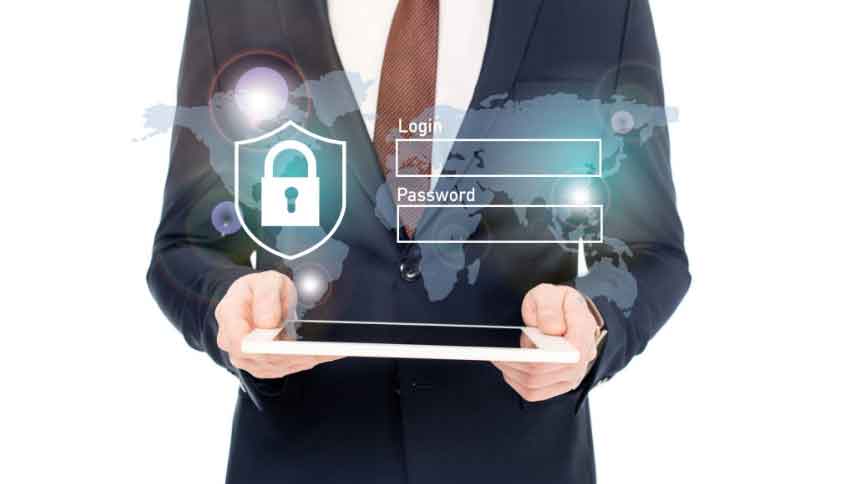Show:
Strengthening Cybersecurity Leveraging Passwordless Authentication for Enhanced Protection
The conventional password-based authentication approach has proven to be ineffective in protecting sensitive information in today’s digital environment. As a result, businesses and organizations are increasingly relying on passwordless authentication as a more secure and effective alternative.
The way users access their accounts securely and conveniently has been revolutionized by this unique and effective method which does away with the need for conventional passwords and depends instead on what the user “is” or “has” to prove his/her identity.

The Inherent Weakness of Passwords
Despite being commonly used for quite a while in online security, passwords have many flaws. Data breaches are more likely to occur because users frequently reuse passwords across several accounts or generate weak passwords that are simple to guess.
To prevent such weaknesses, individuals and businesses can adopt advanced password management solutions like Kelvin Zero, which can generate and store strong, unique passwords for different accounts, enhancing overall security and mitigating the risks associated with password-related vulnerabilities.
Furthermore, phishing assaults that utilize deceptive tactics to fool people into divulging their passwords have advanced considerably. Quite a number of security flaws have resulted from these issues, making passwordless authentication the preferred alternative.
Highlighting the Benefits of Passwordless Authentication
Passwordless authentication has a number of compelling benefits that make it the preferred option for solving contemporary security issues. Credible passwordless authentication services specialize in helping firms to implement this cutting-edge security measure. By utilizing cutting-edge technologies like challenge-response authentication, token-based authentication, and biometric authentication, security is improved.
These techniques include distinctive physical characteristics, one-time codes, or customized replies to verify the user’s identity. This makes it far more difficult for cybercriminals to acquire unauthorized access.
Moreover, password-free options vastly enhance user convenience. Users no longer need to memorize complicated passwords because they can easily access their accounts with a quick biometric scan or verification code. This quick login process also boosts user productivity.
In addition, passwordless authentication can help enterprises save money. Account lockouts, password resets, and user assistance requests are frequent expenses for the conventional password-based system. However, businesses can now reduce these costs and improve overall productivity by implementing this unique system.
How Passwordless Authentication Works
In order to verify a user’s identification, passwordless authentication relies on something the person “is” or “has” rather than something they “know” (like a password). One of the main strategies for password-free verification is biometric authentication, which makes use of distinctive physical characteristics like fingerprints, iris patterns, or facial features.
One-time verification codes are sent to the user’s registered device using the token-based authentication method. This form of passwordless authentication is also common. It is frequently done via SMS or authenticator apps. These codes give an additional layer of security against unwanted access because they are only valid for a short time.
Another password-free authentication approach is challenge-response authentication in which users react to a challenge or question posed by the system to demonstrate their identity without the use of a password.

How Passwordless Authentication Enhances Protection
Significant benefits for boosting cybersecurity and preventing numerous cyber threats are provided by passwordless authentication. Phishing attack prevention is one of its main advantages. Instead of using static passwords, passwordless approaches ensure that even if users are duped into disclosing their credentials, these stolen credentials are useless.
Additionally, passwordless authentication is extremely resistant to brute-force assaults which is one of the frequent ways attackers systematically try passwords. Since there is no predetermined set of characters to aim for, the likelihood of figuring out the proper combination is considerably low.
The resistance of passwordless authentication to credential stuffing attacks is another important security advantage. In these assaults, fraudsters access several accounts across various platforms without authorization by using usernames and passwords that have already been exposed. These compromised credentials are rendered useless via passwordless techniques, adding an extra degree of security.
Passwordless authentication is also effective against zero-day attacks, which exploit newly discovered flaws. Passwordless systems serve as a strong defense since they do not rely on set passwords attackers use to their advantage.
How to Strengthen Your Cybersecurity Via Passwordless Authentication
To ensure a seamless transition and user adoption, passwordless authentication must be implemented carefully. Here are the crucial actions you must take:
· Choose a Solution: Select the passwordless authentication type/service that best suits the needs and security standards of your company after conducting research on the available options.
· Configuration/Customization: Configure/customize the selected solution in accordance with the needs of your company.
· Gradual Migration: Gradually switch users over to the new passwordless solution from the outdated password-based system. Provide clear instructions to help users adjust easily to the new cybersecurity system.
· User Education: Educate users on using the new login methods and the advantages of passwordless authentication.
Tips for Successful Implementation
1. Test the passwordless authentication solution on different platforms and devices to ensure it functions optimally.
2. Give user-friendly instructions to help guide users through the entire authentication process.
3. Adjusting to a new security system can be a bit inconveniencing. So, be sure you provide the needed guidance for users.
4. Passwordless systems should be used in combination with multi-factor authentication (MFA). This ensures an increased security layer.
Final Thoughts
To strengthen your organization’s online security, cybersecurity experts advise utilizing passwordless authentication given its effective solutions.
There’s no safer way to guarantee your cyber-safety than deploying the seamless integration of passwordless authentication as it enhances security against online threats and improves user experience.

 Return to Previous Page
Return to Previous Page








